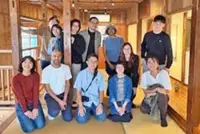The beautiful Ubaidiah Mosque, which features an Anglo-Indian architectural language (introduced by the British and borrowed from British India), is a historical destination not to be missed in Kuala Kangsar. Photo: Shireen Zainudin
This royal throne of kings ...This earth of majesty ...This other Eden, demi-paradise,
This fortress built by Nature for herself
Already a subscriber? Log in
Save 30% OFF The Star Digital Access
Cancel anytime. Ad-free. Unlimited access with perks.





